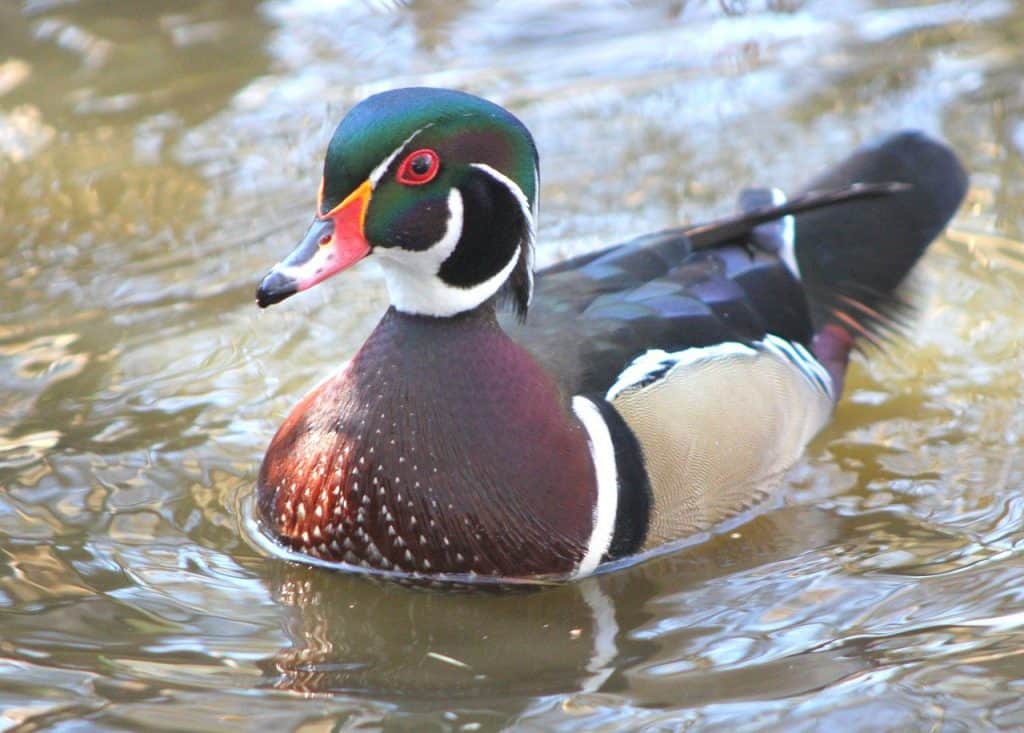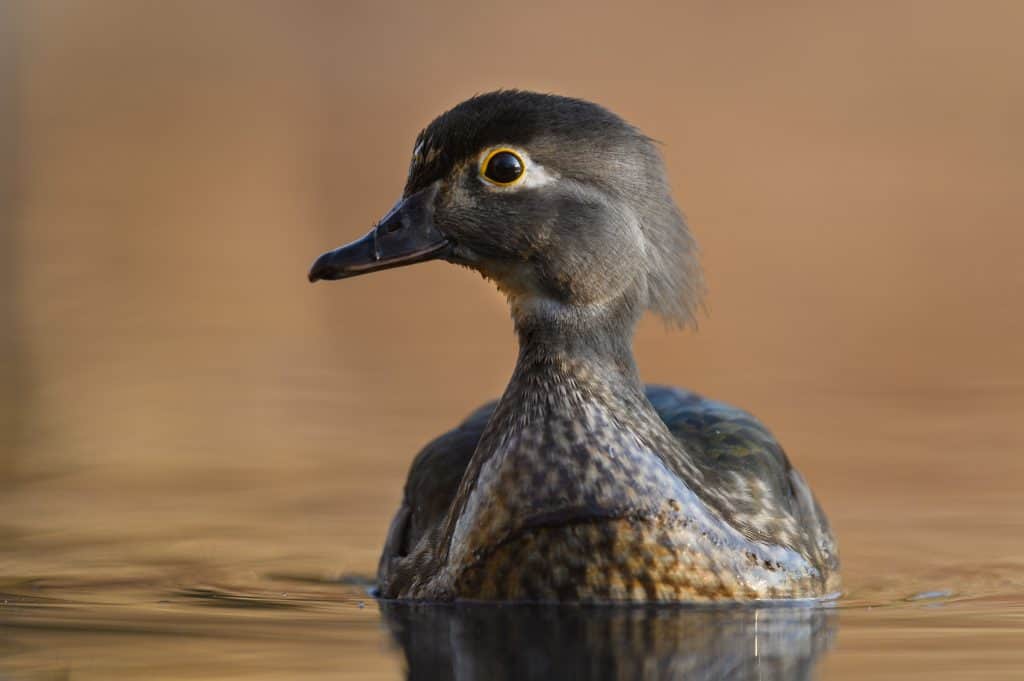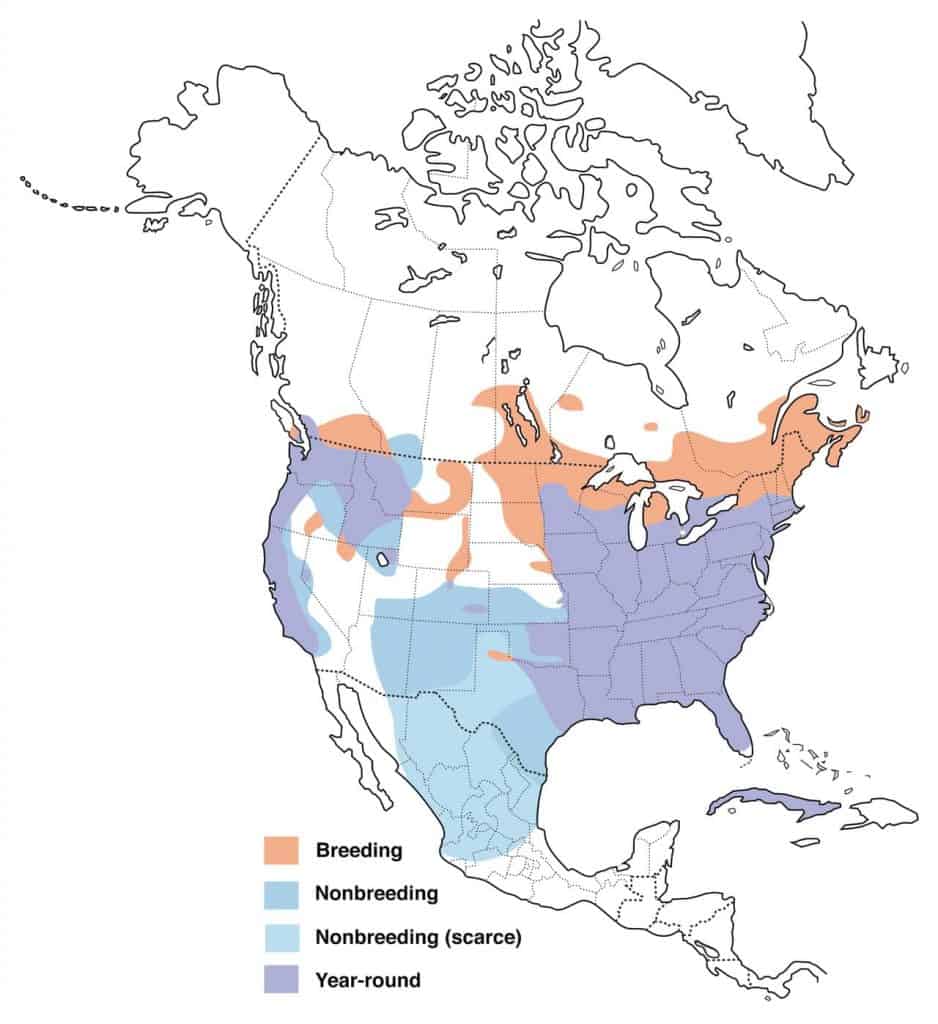

Appearance: The wood duck is a large bird about 19-22″ long and the male sports an array of colors. The male’s head and crest are metallic purplish-green, the sides of the face are black, a white stripe runs along the neck and a smaller one goes up each cheek. Their chest and the rump are dark red, and the sides are olive-yellow with black & white stripes on the edges, the belly is white, tail and back are black. The eyes are red, bill white with red on each side. The top of the bird’s head and crest are metallic purplish-green. The sides of the face are black, and a white stripe runs along the neck. A small white stripe also extends up each cheek. The chest and the rump are dark red, and the sides are a drab yellow with black and white stripes at the edges. The wood duck’s belly is white, its tail and back are black, and its wings are black and blue. The female looks vastly different. She is gray-brown with a white-speckled breast
Winter Diet: During winter, when water plants and insects become scarce, wood ducks will eat seeds, nuts, and grains.
Feeder food: They don’t visit feeders.
Winter habitat: During winter, many wood ducks remain in their year-round range along the pacific coast as well as the easter half of the US. Other wood ducks will migrate further south and inland including the states of Utah, Arizona, New Mexico, Nebraska, Oklahoma, Texas, and Mexico. Wet areas including swamps, marshes, streams & creeks as well as small lakes.
Range Map


